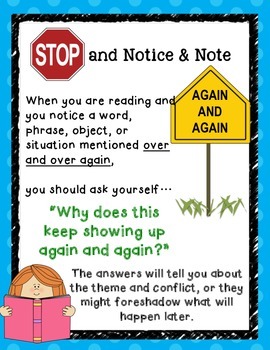
I thought it would be nice to gather all 6 posts here for easy reference and also to highlight a few rockstar picture books that can be used for more than one signposts, that way if you have a limited budget for book buying (don’t we all), you can start with these few and still cover a lot. It has truly been awesome finding picture books to go along with the strategies that can be used for many grade levels and through so many lenses. Tags #gamification Art Assessment CCLS choice menu boards ClassCraft Close Reading common core creative writing Creativity Critical Thinking differentiation digital literacy Edpuzzle edtech essay writing Field Trip Film in the Classroom Films as teaching Tool Flat Classroom Flipgrid Game Based Learning Games gaming GeniusHour Genius Hour Graphic Organizers History Holocaust Hyperdoc hyperdocs Interactive Foldable ISTE ISTE Standards lesson ideas literacy literacy 2.Yesterday I posted my final picture book post for all of the signposts in the amazing book Notice and Note: Strategies for Close Reading by Kylene Beers and Robert Probst. To grab a copy of this foldable and instructions click here. The purpose in designing this foldable is to help students navigate complex nonfiction texts and question the text in a way that encourages student to be critical consumers of information. The foldable includes a list of the five signposts with definitions, anchor questions to help think carefully each signpost, and signal words to help identify the signposts. Students can continuously refer back to the foldable in their Interactive English Notebooks. I have designed an interactive foldable for my students that front loads the five nonfiction signposts.

Word Gaps: The author uses words or phrases that students recognize they don’t know. The author might also list others in citations. Quoted Words: The author quote others, directly, with what we are calling a Voice of Authority or Personal Perspective. Numbers and Stats: The author uses numbers or words that show amounts of statistical information to show comparison in order to prove a point or help create an image.


As I am about to embark on a nonfiction unit of study with my students focusing on reading and writing investigative journalism pieces that are a hybrid of narrative and argumentative writing, I will introduce the nonfiction signpost and helping students to see “deeply into informational texts” and think critically about the moves that writers make.Ĭontrasts and Contradictions: The author presents something that contrasts with or contradicts what the reader is likely to know, think,or have experienced, or shows a difference between two or more situations, events, or perspectives.Įxtreme or Absolute Language: The author uses language that leaves no doubt about a situation or event, the perhaps exaggerates or overstates a case. Needless to say, when I heard Beers and Probst were publishing Reading Nonfiction: Notice & Note Stances, Signposts, and Strategies (2015), I preordered the book knowing I would include these “new signpost” with my repertoire for teaching nonfiction reading. With every fictional text we read, we identify the signposts, discuss how the signposts lead to deeper comprehension of the text, and understand the author’s intentions. I designed an interactive foldable with the six signposts for fiction and every September, I teach my students the signposts. When Kylene Beers and Robert Probst published Notice and Note: Strategies for Close Reading (2012), I knew I had stumbled upon an essential text for teaching close reading.


 0 kommentar(er)
0 kommentar(er)
